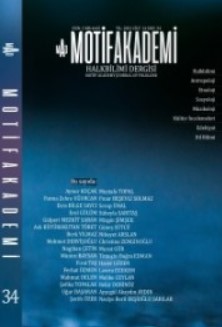SON USTASININ ARDINDAN HÜYÜK ÇÖMLEKÇİLİĞİ
HÜYÜK POTTERY AFTER ITS LAST MASTER
Author(s): Serap ÜnalSubject(s): Archaeology, Cultural history, Local History / Microhistory
Published by: Motif Halk Oyunları Eğitim ve Öğretim Vakfı
Keywords: Pottery; Hüyük; Lake District; cultural heritage; tradition;
Summary/Abstract: Archaeological findings show us that pottery is an important tradition and material culture element in the Anatolian geography from its long past. At the same time, the fact that the baked soil is a material that cannot be destroyed means a special value in terms of bringing the documents of the past to the present. Primitive pottery, which we witness in almost every area of Anatolia, appears with intense examples in many centers in this region to the extent that we can count parallel to the prehistoric rich history of the Lakes Region. It is undoubtedly exciting that a tradition of thousands of years survives almost uninterruptedly in some pottery centers without breaking its primitive state. Pottery, which has been continuing as a craft form without much change since the beginning, has disappeared except for a few centers that have survived to the present day, although it shows itself very actively in the archaeological and ethnographic sense in all Anatolia and especially in the Lakes Region. One of these centers is Hüyük district of Konya province. Hüyük pottery, which shows signs of ending with the death of the last potter master, still resists despite all its adverse conditions. In this article, in addition to the efforts to revive pottery, the local characteristics of Hüyük pottery are explained within the scope of the protection of an important cultural heritage. The article was written using the primitive pottery research method in situ (in the field).
Journal: Motif Akademi Halkbilimi Dergisi
- Issue Year: 14/2021
- Issue No: 34
- Page Range: 679-690
- Page Count: 12
- Language: Turkish

